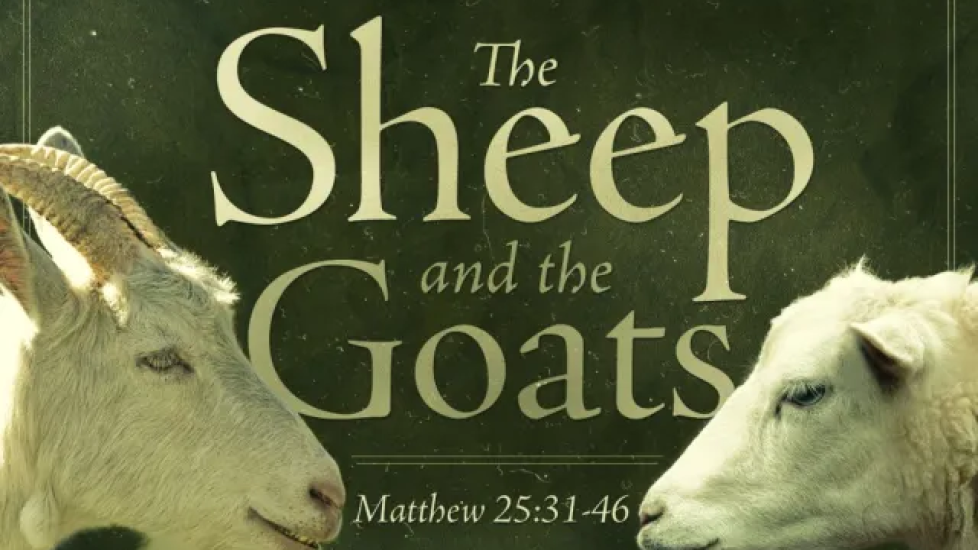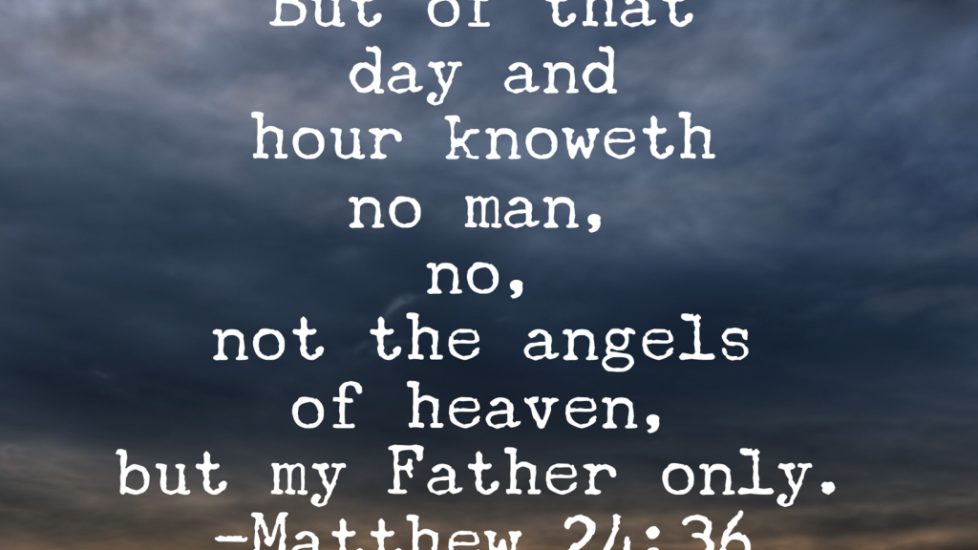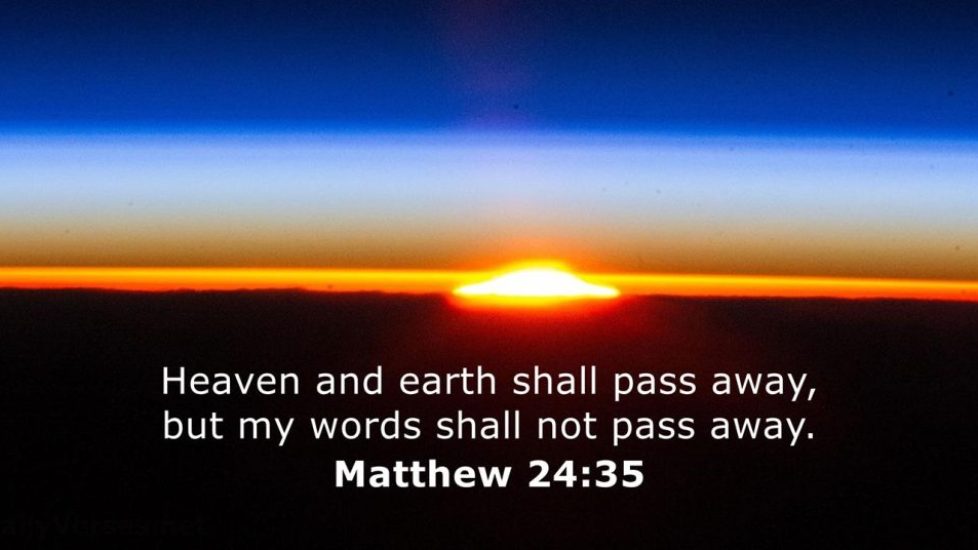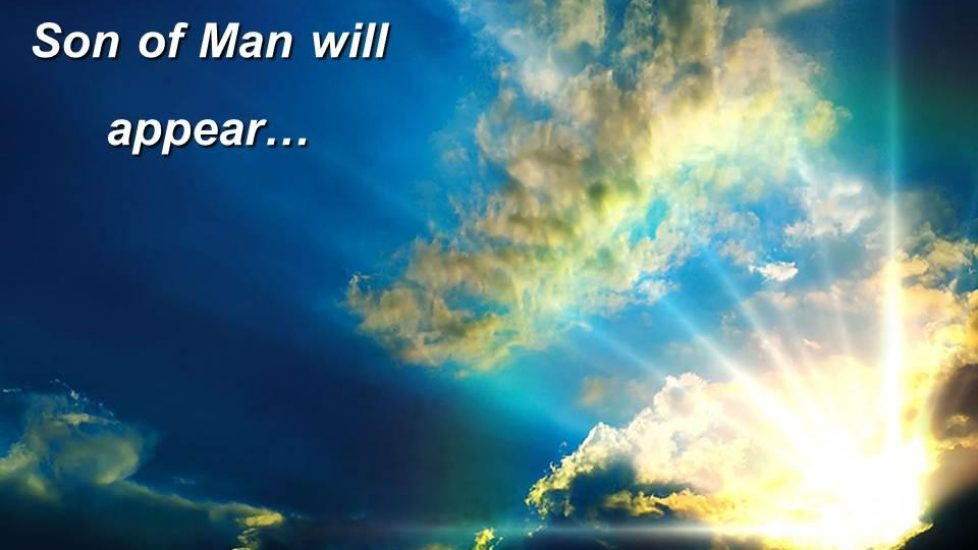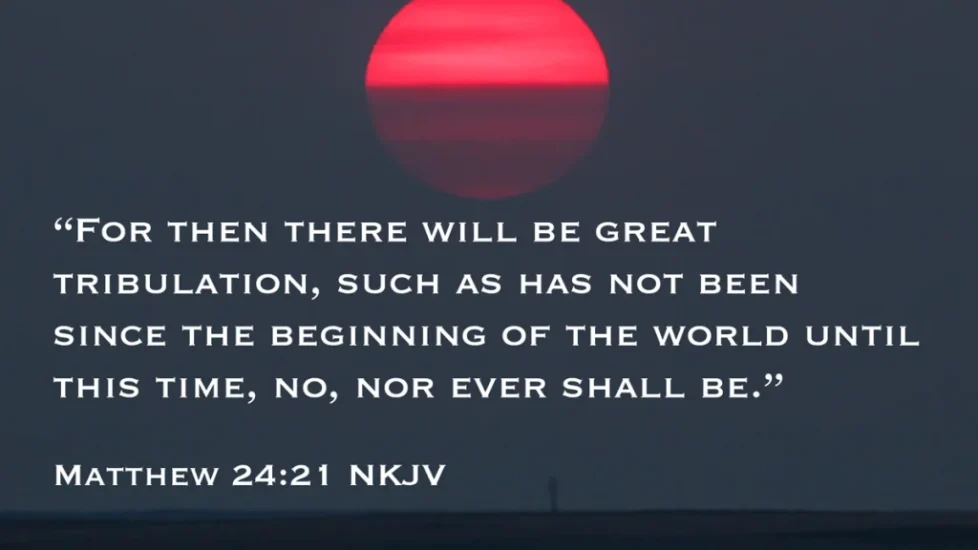The Sheep and Goat Judgment
Matthew 25:31-46
Today, we come to the conclusion of the Olivet Discourse, that portion of the Gospel of Matthew in which our Lord taught His disciples about His second coming. After giving signs that will precede and accompany His coming, Jesus spent most of this discourse warning His disciples to watch and be ready for His coming (Matt. 24:42,44). He showed that His coming would be swift and unexpected like in the days of Noah (Matt. 24:37-42) or like a thief coming at night (Matt. 24:43-44). At the end of Matthew 24, Jesus said that His coming would be like a master returning to find a slave either faithfully doing the work that he was assigned, or a slave who neglected his duty and abused his authority (Matt. 24:45-51).
In Matthew 25, we have already studied two parables about the kingdom of heaven. Jesus said it would be like a wedding feast where the bridegroom is delayed. Some virgins were prepared for this by bringing extra oil for their lamps. Others did not prepare and were shut out. So Jesus taught His disciples, “Watch therefore, for you know neither the day nor the hour in which the Son of Man is coming.” (Matt. 25:13). Next, Jesus compared the kingdom to a master who entrusted his wealth to certain slaves. Some put the master’s money to work and produced a good return for him. One did not trust the master, so he buried his master’s money. When the master returned, he settled accounts with them, rewarding the faithful servants and casting the wicked, lazy servant into the outer darkness.
Do you see the common theme in all these illustrations that Jesus gave about His coming? When Jesus comes again He will come in judgment, separating the faithful righteous from the unbelieving wicked. Whether it is the wise virgins separated from the foolish virgins, the faithful servants separated from the wicked, or the sheep separated from the goats, this is the point that Jesus emphasized. His second coming is a day of reckoning when those who are not ready will be separated from those who are ready.
In our passage today, although Jesus uses the illustration of a shepherd separating the sheep from the goats, it does not read strictly like a parable. Rather, it is the startling description of Christ’s judgment at His second coming. In the other parables, there is a delay in the groom’s or the master’s coming, and the separation and judgment come at the end of the story. But in this last section, the Lord’s coming is featured first and the judgment consumes the entire teaching. It is all about that final day when Jesus returns and judges the righteous and the wicked, the saved and the lost, the sheep and the goats.
First, we see the …
1. Scene of the Judgment (Matt. 25:31-33)
31 “When the Son of Man comes in His glory, and all the holy angels with Him, then He will sit on the throne of His glory. 32 All the nations will be gathered before Him, and He will separate them one from another, as a shepherd divides his sheep from the goats. 33 And He will set the sheep on His right hand, but the goats on the left.” (Matt. 25:31-33).
When will this judgment take place? Jesus begins by establishing the timing of this judgment. It is, “ When the Son of Man comes in His glory” (Matt. 25:31). This is the same time Jesus spoke about in Matthew 24:30, when “… the sign of the Son of Man will appear in heaven, and then all the tribes of the earth will mourn, and they will see the Son of Man coming on the clouds of heaven with power and great glory.” (Matt. 24:30). This talks about the time of His return to earth. When He comes, the whole world will see Him. The whole world will know that it is Jesus returning to judge the world.
Those with a more dispensational eschatology believe this sheep-goat judgment is a particular judgment that occurs on earth where He judges those who are alive from the nations at His second coming. Others see this as a general picture of the judgment of all people. Still others see this as a judgment occurring in heaven as Jesus sits at the right hand of the Father. Regardless of your eschatology, this much is clear: Jesus is the glorious King and judge to whom we must give an account on that day.
Who is the judge? King Jesus. When the Lord Jesus comes, He will claim the throne that is rightfully His. He will consummate His kingdom. This is what it means in Matthew 25:31 when Jesus says that the Son of Man “will sit on the throne of His glory.” When Jesus sits upon the throne, it will be a demonstration to all that He has all authority over time and eternity. On Wednesday, we looked at Psalm 2 where God says to the raging nations, “Yet I have set My King On My holy hill of Zion,” (Psalm 2:6). And to His Son, the Father says, “Ask of Me, and I will give You The nations for Your inheritance, And the ends of the earth for Your possession.” (Psalm 2:8).
But Jesus doesn’t come alone. He comes with “all the holy angels” (Matt. 25:31). Jesus explained the role of the angels in the separation and judgment in His parables of the wheat and the tares (Matt. 13:41-43) and the dragnet (Matt. 13:47-50). As Jesus promised in Matthew 16:27, “For the Son of Man will come in the glory of His Father with His angels, and then He will reward each according to his works.” In Matthew 24:31 after describing His second coming, Jesus says, “And He will send His angels with a great sound of a trumpet, and they will gather together His elect from the four winds, from one end of heaven to the other.”
So, who is the judge? It is King Jesus, seated on His glorious throne, accompanied by holy angels. As the Son of Man and Son of God, Jesus will preside on the day of judgment. Jesus said about himself in John 5, “For the Father judges no one, but has committed all judgment to the Son, that all should honor the Son just as they honor the Father. He who does not honor the Son does not honor the Father who sent Him. … and has given Him authority to execute judgment also, because He is the Son of Man.” (John 5:22-23,27).
Isn’t it good to know that the same One who is our Savior is also our judge? Revelation 1 describes Him as, “Jesus Christ, the faithful witness, the firstborn from the dead, and the ruler over the kings of the earth,” and then describes what He has done, saying, “To Him who loved us and washed us from our sins in His own blood and has made us kings and priests to His God and Father, to Him be glory and dominion forever and ever. Amen.” (Rev. 1:5-6). Then John goes on to write about His coming and judgment, “Behold, He is coming with clouds, and every eye will see Him, even they who pierced Him. And all the tribes of the earth will mourn because of Him. Even so, Amen.” (Rev. 1:7). Our glorious Lord and King is also the One who “also loved the church and gave Himself for her” (Eph. 5:25). Aren’t you glad that our judge is the One loved us and gave Himself for us (Gal. 1:4; 2:20; Tit. 2:14)?
Whom does He judge? Matthew 25:32 says, “All the nations will be gathered before Him.” The “nations” means peoples of all kinds. It is the same word Jesus used in His great commission to His disciples at the end of Matthew 28 when He commanded them to “Go therefore and make disciples of all the nations…” (Matt. 28:19). All people from all nations will be judged.
How will He judge? Jesus says, “… He will separate them one from another, as a shepherd divides his sheep from the goats. And He will set the sheep on His right hand, but the goats on the left.” (Matt. 25:32-33). Jesus will separate the people into two distinct groups, pictured as the sheep and the goats. Jesus will put the sheep on His right and the goats on His left—the right hand being the side of honor and blessing in Scripture.
John Broadus tells about his traveling in the ancient land of Israel. On the very morning he was working on his commentary on this chapter, looking across the plain of Sharon, he saw a shepherd leading forth a flock of white sheep and black goats, all mingled as they followed him. As the shepherd came into a little green valley, he stood facing the flock. When a sheep came up, he tapped it with his long staff on the right side of the head, and it quickly moved off to his right; a goat he tapped on the other side, and it went to his left.[1] This is the picture Jesus is giving. The shepherd easily distinguishes the sheep from the goats.
Notice that their identity as a sheep or a goat is already fixed. The Lord does not make anyone a goat or turn someone into a sheep on that day. Their nature as a sheep or a goat is already set and He know which of the people belong in each group. In John 10, Jesus said,
14 “I am the good shepherd; and I know My sheep, and am known by My own. 15 As the Father knows Me, even so I know the Father; and I lay down My life for the sheep. … 27 My sheep hear My voice, and I know them, and they follow Me. 28 And I give them eternal life, and they shall never perish; neither shall anyone snatch them out of My hand. 29 My Father, who has given them to Me, is greater than all; and no one is able to snatch them out of My Father’s hand. 30 I and My Father are one.” (John 10:14-15, 27-30).
Jesus is the good shepherd who knows His sheep. Each individual person will be singled out and assigned either to the sheep or the goats. Charles Spurgeon comments: “Not one goat will be left among the sheep, nor one sheep with the goats. The division will be very close and personal: ‘one from another; They will not be separated into nations, nor even into families; but each individual will be allotted his or her proper place among the sheep or among the goats.”[2]
It is clear that the sheep represent those who are saved and the goats represent those who are lost. The most common designation in Scripture for these two groups are the righteous and the wicked. (Genesis 18:23; Psalm 1:5; Proverbs 11:21; Matthew 13:49; Acts 24:15; 2 Peter 2:7).
It is not always easy for us in this life to discern those who will be blessed by God the Father as the sheep and those who are cursed as the goats. The prophet Malachi deals with this issue because in this life it often appears that the wicked are proud and blessed and the righteous are humble, poor, and persecuted (Mal. 3:13-15). But the Lord has the final word in the judgment. Malachi writes,
16 Then those who feared the LORD spoke to one another,
And the LORD listened and heard them;
So a book of remembrance was written before Him
For those who fear the LORD
And who meditate on His name.
17 “They shall be Mine,” says the LORD of hosts,
“On the day that I make them My jewels.
And I will spare them
As a man spares his own son who serves him.”
18 Then you shall again discern
Between the righteous and the wicked,
Between one who serves God
And one who does not serve Him.
(Mal. 3:16-18).
If you are among His sheep in this dark and fallen world, this promise is a cause of great comfort. This world may not make much of a distinction anymore between good and evil, or justice and injustice, or righteousness and unrighteousness. But we need to remember that King Jesus does! When He comes, He will make clear distinctions; and will separate the righteous from the unrighteous on the great day of His righteous judgment.
Just as we saw the rest of the Olivet Discourse, the day of Christ’s coming will be a day of separation in judgment. The Lord knows those who are His. The sheep will be given the place of honor and will inherit the Kingdom of heaven (Matt. 25:34). The goats will be assigned the place of shame and will be cast “into the everlasting fire prepared for the devil and his angels” (Matt. 25:41).
So, this judgment will take place when the Son of Man comes again and sits on His glorious throne as King. Our Lord Jesus Christ is not only the King, He is the judge. He judges all the people of all the nations. He separates them according to their identity. He blesses the righteous and curses the unrighteous.
How do you know in which group you will be found on that day? The eternal and critical issue is, what have you done with Jesus Christ? Have you believed that Jesus Christ is the Son of God who died for your sins and was raised from the dead to give you life? To everyone who repents and believes in Him, He grants forgiveness and eternal life. Paul quotes Psalm 32 in Romans 4, writing,
7 “Blessed are those whose lawless deeds are forgiven, And whose sins are covered; 8 Blessed is the man to whom the LORD shall not impute sin.” (Romans 4:7-8).
Either your sins will be counted against you on that day of judgment, or your sins will have been imputed to Christ. Either you will fall by your own unrighteousness, or you will stand in Christ’s righteousness. Paul says in Romans 8, “There is therefore now no condemnation to those who are in Christ Jesus, who do not walk according to the flesh, but according to the Spirit.” (Rom. 8:1). Jesus says in John 3,
18 “He who believes in Him is not condemned; but he who does not believe is condemned already, because he has not believed in the name of the only begotten Son of God. 19 And this is the condemnation, that the light has come into the world, and men loved darkness rather than light, because their deeds were evil.” (John 3:18-19).
In that same passage that speaks about Jesus being the judge, He says, “Most assuredly, I say to you, he who hears My word and believes in Him who sent Me has everlasting life, and shall not come into judgment, but has passed from death into life.” (John 5:24). Judgment will not be condemnation for those who have believed in Christ. Instead, judgment will be a reward for what we have done for Christ.
If you have not yet repented and believed in Christ, do it today. Turn from you sin and yourself. Turn to Christ and His perfect sacrifice for your sins on the cross. Believe that Jesus has been raised from the dead and is alive forever to save those who trust in Him. He will save you. He will change your identity from a goat to a sheep. He will transform you into a child of God.
Next time, we will see the details of how Jesus blesses the righteous and curses the unrighteous.
- Blessing for the Sheep (Matt. 25:34-40)
- Curse for the Goats (Matt. 25:41-45)
- Eternal Destinies (Matt. 25:46)
——————————————————————–
[1] John A. Broadus, Commentary on the Gospel of Matthew, American Commentary on the New Testament (Philadelphia: American Baptist Publication Society, 1886).
[2] Charles Spurgeon; The Gospel of the Kingdom: An Exposition of the Gospel of Matthew, https://archive.org/details/cu31924029340720/page/444/mode/2up?q=%22Not+one+goat+will+be+left+among+the+sheep%2C+nor+one+sheep+with+the+goats%22.
